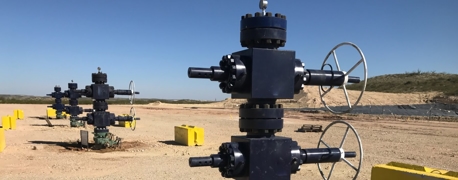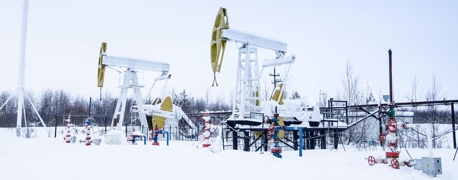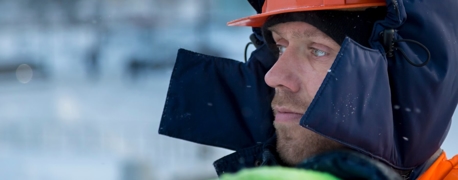What Does a Driller Do on an Oil Rig?

Drillers, like anyone else on an oil rig, have a physically demanding role that involves long hours in a hazard-filled setting, but a driller also plays a supervisory role as well. Not only do they participate in the actual drilling process, but they are also responsible for managing a few crews of rig workers and the equipment involved in drilling, ensuring that safety protocols are followed, and protective personal equipment (PPE) is worn properly. This senior-level position requires a significant amount of experience to fulfill, and it still puts you in the thick of dangerous equipment and work.
How Can Somebody Become a Driller?
There are no real shortcuts on the path to becoming a driller, whether on an onshore or offshore oil rig. It is possible to get an oil driller diploma at some schools, where you can learn how to operate drilling equipment, but you will still need years of field experience to become a driller. A college degree can’t get you the job of driller out the gate either, though something like a mechanical or industrial engineering bachelor’s degree can help speed up career progress. Even with a shorter track toward the role, it still takes years of working your way up through the ranks to reach the position of driller. Whoever reaches that supervisory role needs to understand the positions that make up their rig crew.
To start, it only takes a high school diploma and getting hired as a roustabout. This is an entry level job that can include anything and everything from hauling heavy equipment to cleanup jobs, manual labor, and anything else that’s needed. In a year or two, you could advance to a roughneck position, which still involves a great deal of manual labor but also helps with setting up drilling pipe, inserting and extracting drills, and so forth, providing you with hands-on experience in drilling.
After that, you could find yourself working as a pumpman or assistant derrickman, who helps with mud pump room duties, while after five to ten years from starting out, you could land the derrickman role. A derrickman supervises roughnecks, pumpmen, and the mud pump room in general, helping both the driller and mud engineer. Another next role could be that of assistant driller, gaining more invaluable experience and training. These can all be roles that a driller manages, and first-hand experience in how these roles operate is key to becoming an effective driller.
While on-the-job experience is a valuable part of understanding the different positions around the rig, employers must ensure formal education and training throughout to enhance worker safety. This training would cover drilling techniques and technology, up-to-date safety regulations, and more.
Certification that could be required for a driller includes either:
- IWCF certifications: The International Well Control Forum offers training on drilling and wells personnel basics, shutting in a well, and well site supervising.
- Or completing IADC training at an accredited center: The International Association of Drilling Contractors trains on safety for onshore and offshore rigs.
If a driller works offshore, they will also have the following training/certifications under their belt:
- Basic Offshore Safety Induction and Emergency Training (BOSIET) – includes emergency first aid, using lifeboats, and so forth
- Minimum Industry Safety Training (MIST) – safety training for working around toxic substances
- Helicopter underwater escape training (HUET)
Finally, anyone aspiring to be a driller will need to prove adequate physical fitness to get hired for any of the above roles on an oil rig.
What Does a Driller Do on an Oil Rig?
Once someone has made the long climb up to the driller position, it is a supervisory role, but not one where you’re just watching and directing others who are actually performing all the work. A driller still needs to be capable of heavy lifting and other physically demanding tasks throughout a 12-hour shift.
Some of the tasks a driller may need to perform include:
- Assembling and inspecting drilling tools, connecting drill pipe
- Raising and lowering the drill string and bit
- Maintaining drill string rotation speed
- Monitoring drill pipes, gas levels & pressure building
- Manning the control valves for oil, gas, and water flows
- Supervising well completion and testing
- Keeping records and informing manager of the oil rig’s status
From setting up and operating drilling machinery to ensuring that all equipment is properly maintained, drillers also have to follow the drilling plans that have been laid out by engineers and contractors. This includes carrying out the instructions for the drilling bit weight, pump outputs, and rotary table, as well as aligning with the mud engineer’s plan for drilling fluids.
The driller needs to keep things on track with the budget and timetable. Accordingly, the driller has to stay alert for the need to adjust the drilling plan along the way as needed. In addition to supervising workers like roughnecks, motormen, and derrickmen on a rig crew, drillers will also work with mud loggers, who gather data on rock cuttings to assess the formations being drilled through, as well as geologists and various engineers. Their data can help the driller ensure that drilling progress continues safely and efficiently.
While it can throw a wrench in the timetable, if a driller notices something like a gas pocket or the drill getting stuck, they may have to trigger an emergency shutdown. Not only can they make this call, but a driller would help with the mechanical processes involved in an emergency shutdown. Quick action in these situations can prevent fires from breaking out or a disastrous well blowout.
Upholding Safety Standards on an Oil Rig
A lot of roles can overlap on an oil rig, but one of the distinct features of the driller role is that of being one of the parties responsible to look out for worker safety. This not only means calling for a stop to drilling if something looks off, but also making sure that rig crews have the safety training and equipment they need.
A driller may take measures to uphold safety that include:
- Holding safety meetings
- Running drills to prepare for emergencies
- Getting documents and permits in order for the crew
- Ensuring that processes are performed according to company policies and federal regulations
Challenges & Risks That Drillers Face on the Job
Risky Transportation & Grueling Locations
Whether the rig is out in a desert or another type of wilderness, or placed in the middle of the ocean somewhere, a driller like any other oil rig worker is going to have to deal with the dangers of travel to a remote job site. From vehicle accidents to boat and helicopter crashes, transport to the worksite was the leading cause of death for oil and gas workers from 2014 to 2019, per the CDC. Because of the secluded nature of these oil fields, there are also the challenges of being far from advanced medical care if disaster strikes. Even when things go smoothly, there is still the isolation and loneliness that comes from being away from home and society during 12-hour workdays, with no days off for weeks or even months on end.
These sites also expose workers to all kinds of extreme weather, which can mean everything from sweltering heat and sunburn to sleet and icy conditions. These not only carry health risks on their own, but they make risky work around drilling equipment much more hazardous.
Dangerous Equipment & Noise Exposure
Drillers are working with and around heavy equipment, which means spinal cord injury risks from constant lifting to caught-between and struck-by accidents that can crush or amputate limbs, inflict brain trauma, or cause other catastrophic injuries. With all this machinery also comes a great deal of hazardous noise exposure, enough to inflict hearing loss over the course of time. Diminished hearing ability also makes working around the rig that much more fraught with danger.
According to the National Institute for Occupational Safety and Health (NIOSH), the recommended limit for noise exposure over the course of 12 hours is no more than 82 A-weighted decibels (dBA), while the allowable noise exposure over the course of 8 hours is 85 dBA. Exposure to noises that measure 100 dBA is only safe for 15 minutes.
By these standards, the noise levelsfor areas and equipment around an oil rig are consistently too high:
- The rig floor’s noise levels normally range from 86 to 100 dBA
- Mud pumps emit sounds that reach 90 to 95 dBA
- The rig engine room has noise levels from 105 to 115 dBA
With 12-hour workdays being the norm, drillers are exposed daily to much more than the safe limit for noise exposure. Adequate PPE, such as earplugs, can be helpful when they fit properly, are worn correctly, and used consistently. Even with these precautions, however, there’s a reason that the oil and gas drilling industry has some of the highest rates of workers who suffer hearing loss.
Toxic Chemical Exposure
From lubricants and drilling fluid to silica dust, benzene, crude oil, and other hazardous substances, drillers are also exposed to all manner of harmful substances. Even with PPE, exposure to these substances over such long hours can increase the cancer, lung disease, blood disorder, and other health risks that these chemicals threaten.
Supervisory Responsibilities
On top of these shared difficulties, a driller has the responsibility to be a leader, providing training as needed, ensuring that everyone works safely, and helping to resolve any disputes or trouble that breaks out among rig crews. When everyone is living in close quarters—often for 14 to 28 days straight of exhausting, high-risk work—the strain and pressure can cause tempers to flare. If workers are at each other’s throats, drillers need the interpersonal and managerial skills to defuse tensions and keep the peace.
Since drillers are also tasked with keeping everyone as safe as possible, that means ensuring that their crew has the right PPE and that all safety protocols are being followed. In far too many cases, however, they may have to work hard to try compensating for companies that cut corners in order to reduce costs and increase their profits, whether that is by failing to have safety policies in place for certain procedures, or refusing to delay operations and pay for necessary equipment repairs, and so forth.
Oil Companies Have the Ultimate Responsibility for Rig Workers’ Safety
It is up to oil companies to set effective safety protocols and training for rig crews, and it’s up to companies to provide reliable, regularly maintained equipment, communications, drilling plans, and other resources that enable drillers to work effectively and safely. For instance, even if a driller follows a drilling plan with the utmost care, but the plan is faulty, or the equipment involved is poorly designed, then their actions may not be enough. While drillers are doing everything in their power to stay safe with their crews, it’s the companies they work for that have the ultimate responsibility to keep drillers and all other rig personnel safe.
- Categories


